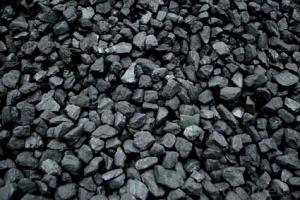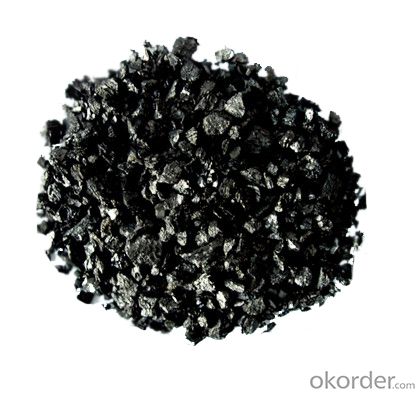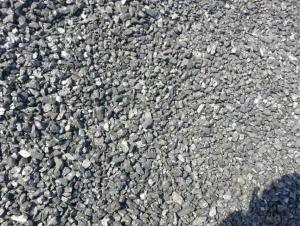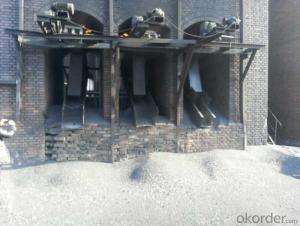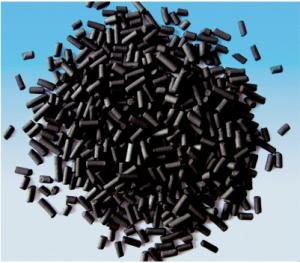Coal Based Pickling Granular Activated Carbon 12x40 Mesh
- Loading Port:
- Tianjin
- Payment Terms:
- TT OR LC
- Min Order Qty:
- 1000 m.t.
- Supply Capability:
- 5000 m.t./month
OKorder Service Pledge
OKorder Financial Service
You Might Also Like
1.Structure of Anthracite Description
Anthracite is made from Shanxi,the coal capital of the word .The quality is very high due to its unique resource .It has been exported to most of the world ,especially to Japan and Korea,as well as mid east.
It is commonly used in drinking water ,food industry ,chemical /dyeing industry ,sea/salt water filtration ,petro-chemical industry ,pulp/paper industry ,sauna,spa,pool,boiler ,etc.
Advantages:
1. Longer Filter Runs2. Faster Filtration3. Long Lifetime4. Good Separation Characteristics5. Savings water and power in washing6.Removes more iron and manganese salts tration ,petrochemical industry ,pulp /paper industry ,sauna,spa,pool,boiler,etc.
2. Main Features of Anthracite
Fixed Carbon: 78 %
Ash: 18 %
Volatile Matter: 4 %
Sulphur: 1.0 %
Moisture: 11 %
Gross Calorific Value: 6450 Kcal
Size: 0 mm - 19 mm: 90%
3. The Images of Anthracite
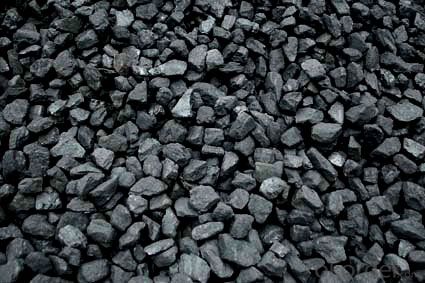
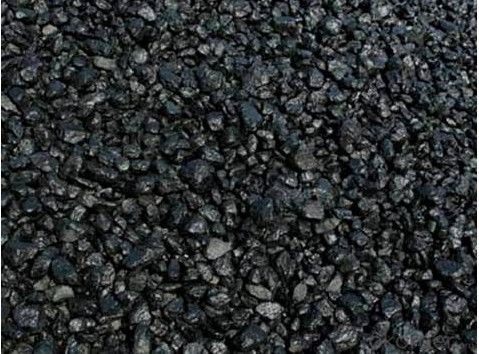
4. The Specification of Anthracite
1. Fixed carbon: 90%min
2.Uniform particles
3.Good separation characteristics
4. Long life
5. Widely used
6.activated anthracite:
7.Certificate: ISO9001, ISO9002, NSF
8.Usage: for water and air purification, etc.
5.FAQ of Anthracite
1). Q: Are you a factory or trading company?
A: We are a factory.
2). Q: Where is your factory located? How can I visit there?
A: Our factory is located in ShanXi, HeNan, China. You are warmly welcomed to visit us!
3). Q: How can I get some samples?
A: Please connect me for samples
4). Q: Can the price be cheaper?
A: Of course, you will be offered a good discount for big amount.
- Q: What are the health effects of carbon pollution?
- The health impacts of carbon pollution, specifically carbon dioxide (CO2) emissions, are wide-ranging and affect both humans and the environment. The primary concern regarding carbon pollution is its contribution to climate change. Because CO2 is a greenhouse gas, it traps heat in the Earth's atmosphere. This leads to global warming and alters weather patterns. As a result, heatwaves, hurricanes, and other extreme weather events become more frequent and severe. These events have direct and indirect effects on health, including heat-related illnesses, injuries, displacement, and the spread of infectious diseases. Furthermore, carbon pollution is closely connected to air pollution, which has significant health consequences. Burning fossil fuels like coal and oil not only releases CO2 but also toxic air pollutants such as sulfur dioxide, nitrogen oxides, particulate matter, and volatile organic compounds. These pollutants can cause respiratory problems like asthma, bronchitis, and other chronic obstructive pulmonary diseases (COPD). They can also trigger cardiovascular issues, increasing the risk of heart attacks and strokes. The health impacts of carbon pollution are not limited to the respiratory and cardiovascular systems. Increased temperatures and changes in precipitation patterns can also affect water and food supplies. This can lead to waterborne diseases, reduced crop yields, malnutrition, and food insecurity. Moreover, carbon pollution has environmental consequences that further worsen health risks. Deforestation reduces clean air availability and the natural carbon sinks that absorb CO2. Ocean acidification damages marine ecosystems, affecting the availability of fish and other seafood, which are essential sources of nutrition for many communities. To minimize the health effects of carbon pollution, it is crucial to reduce greenhouse gas emissions. This can be achieved by transitioning to cleaner and renewable energy sources, implementing energy-efficient practices, and adopting sustainable land-use and agricultural practices. Additionally, investing in healthcare systems and public health infrastructure to address the direct and indirect health impacts of carbon pollution is essential.
- Q: When will amines be fertilized?
- Rain does not applyAttention should be paid to the following problems in the application of ammonium bicarbonate:(1) ammonium bicarbonate can not be mixed with alkaline fertilizer in order to prevent ammonia volatilization and cause nitrogen losses.(2) to achieve the "five not": that is not mixed with fine soil without nitrogen, and there was dew without nitrogen, rain without nitrogen, Tian no inch of water without nitrogen, the sun does not apply. If fertilization time was sufficient, it is best able to make deep application of ammonium bicarbonate fertilizer or fertilizer ball. In addition, ammonium bicarbonate in transportation and storage, light light, close packed, stored in a cool dry place, not with the basic fertilizer and human excrement mixed, so as to avoid loss of effective fertilizer.(3) do not contact crops, seeds, roots, stems and leaves, so as not to burn the plants.(4) do not do fertilizer, otherwise it may affect the germination of seeds.(5): bogey and mixed fertilizer after application of ammonium bicarbonate will release ammonia, fertilizer and fertilizer will make contact, bacteria in the death of the fertilizer losing effect.(6) avoid spraying: spraying ammonium bicarbonate are easy to be burnt leaf, affecting crop photosynthesis
- Q: What are the sources of carbon emissions?
- Carbon emissions are primarily caused by human activities that involve the burning of fossil fuels such as coal, oil, and natural gas. The largest source of carbon emissions is the burning of fossil fuels for electricity generation, transportation, and industrial processes. Power plants that burn coal and natural gas account for a significant portion of carbon emissions, as do vehicles that run on gasoline and diesel fuels. Industrial processes, particularly in sectors such as cement production and steel manufacturing, also contribute to carbon emissions. These processes release carbon dioxide (CO2) during the chemical reactions involved in the production of these materials. Deforestation and land-use changes are another significant source of carbon emissions. When forests are cleared, the carbon stored in trees is released into the atmosphere as CO2. Additionally, the loss of forests reduces the Earth's capacity to absorb CO2 through photosynthesis, exacerbating the problem. Agricultural activities, particularly livestock farming, contribute to carbon emissions through the release of methane (CH4) from the digestive systems of animals and the decay of organic matter. The use of synthetic fertilizers in agriculture also contributes to carbon emissions as they release nitrous oxide (N2O), a potent greenhouse gas. Other sources of carbon emissions include waste management practices, particularly the decomposition of organic waste in landfills, and certain industrial processes that release other greenhouse gases such as hydrofluorocarbons (HFCs) and sulfur hexafluoride (SF6). It is important to note that while carbon emissions are predominantly caused by human activities, natural processes such as volcanic eruptions and wildfires also release carbon dioxide into the atmosphere. However, these natural sources are significantly smaller compared to human-induced emissions.
- Q: What is carbon offsetting in the travel industry?
- Carbon offsetting in the travel industry refers to the practice of compensating for the greenhouse gas emissions generated by travel activities, such as flights or accommodations, by investing in projects that reduce or remove an equivalent amount of carbon dioxide from the atmosphere. This can include initiatives like reforestation, renewable energy projects, or energy efficiency improvements. The aim is to mitigate the environmental impact of travel and contribute to the overall goal of reducing carbon emissions.
- Q: How does carbon dioxide affect climate change?
- Climate change is significantly influenced by carbon dioxide (CO2), a greenhouse gas. CO2 is released into the atmosphere through natural processes like volcanic eruptions or human activities such as burning fossil fuels. Its presence in the atmosphere traps heat from the sun, preventing it from escaping back into space. This phenomenon is known as the greenhouse effect. Human activities, particularly the burning of fossil fuels like coal, oil, and natural gas, have led to an imbalance in the natural carbon cycle. This has caused an increase in CO2 concentration in the atmosphere, resulting in a rapid rise in global CO2 levels. Consequently, the Earth's surface is warming, and climate patterns are changing. Since the Industrial Revolution, the burning of fossil fuels has significantly elevated atmospheric CO2 levels, leading to an increase in the Earth's average temperature. This temperature rise impacts various aspects of the climate system, causing a range of effects. One of the most visible outcomes of increased CO2 levels is global warming. This warming leads to the melting of glaciers and polar ice, which in turn raises sea levels. Rising sea levels pose a threat to coastal areas and low-lying islands, causing increased flooding, coastal erosion, and potential displacement of communities. Moreover, elevated CO2 levels contribute to more frequent and intense heatwaves, droughts, and wildfires in many regions. These extreme weather events negatively affect agriculture, water availability, and human health. Carbon dioxide also disrupts ecosystems by altering the growth patterns and distribution of plant and animal species. Changes in temperature and precipitation patterns, driven by increased CO2 levels, disturb the delicate balance of life, leading to biodiversity loss and potential species extinction. To mitigate the impacts of CO2 on climate change, it is crucial to reduce greenhouse gas emissions. Transitioning to renewable energy sources, improving energy efficiency, and adopting sustainable practices are important steps in reducing CO2 emissions and limiting the extent of climate change. Additionally, efforts to restore and protect forests and other natural carbon sinks can help absorb and store CO2, thus mitigating its effects on the climate.
- Q: What is the impact of carbon emissions on agriculture?
- Agriculture is significantly impacted by carbon emissions, with effects seen in both crop production and livestock farming. The primary consequence of increased carbon emissions is climate change, which has the ability to change weather patterns and temperatures. These alterations can disrupt the delicate balance necessary for successful agriculture. The rising temperatures caused by carbon emissions result in increased evaporation, which can diminish soil moisture and hinder crop growth. This leads to more frequent and severe droughts, causing water scarcity and reduced crop yields. Moreover, extreme weather events like floods, storms, and hurricanes become more common, causing extensive damage to crops and farmland. Another outcome of carbon emissions is the modification of atmospheric composition. Elevated levels of carbon dioxide (CO2) stimulate the growth of specific weeds and invasive species, which compete with crops for vital resources such as sunlight, water, and nutrients. This competition ultimately results in decreased crop yields and lower-quality produce. Furthermore, carbon emissions contribute to air pollution, including the formation of ozone. High levels of ozone can harm plant tissues and limit photosynthesis, thus reducing crop productivity. Livestock health is also negatively affected by ozone, leading to decreased growth rates and milk production. The impact of carbon emissions on agriculture extends beyond crop production to livestock farming. Changes in climate and temperature can adversely affect animal health and productivity. Heat stress becomes a significant issue, resulting in reduced fertility, lower milk yields, and increased vulnerability to diseases. Additionally, livestock require sufficient access to water and nutritious feed, which can become scarce due to droughts and heightened competition for resources. In conclusion, carbon emissions have a detrimental impact on agriculture, affecting both crop production and livestock farming. Climate change, altered weather patterns, and increased competition for resources all contribute to reduced yields, lower-quality produce, and decreased livestock productivity. It is crucial to address and mitigate carbon emissions to ensure the sustainability and resilience of the agricultural sector in the face of these challenges.
- Q: Is the hardness or softness of the steel with higher carbon content?
- The increase of carbon content also reduces the weldability and corrosion resistance of steel, and increases the cold brittleness and aging tendency of steel.
- Q: How does carbon impact the energy balance of the Earth?
- The energy balance of the Earth is primarily influenced by carbon, which plays a significant role in the greenhouse effect. Carbon dioxide, a greenhouse gas, is emitted into the atmosphere through both natural processes and human activities such as the burning of fossil fuels and deforestation. The greenhouse effect occurs naturally when specific gases in the atmosphere trap heat from the sun, preventing it from escaping back into space. This process is essential for maintaining a suitable temperature for life on Earth. However, excessive carbon emissions have intensified the greenhouse effect, resulting in global warming and climate change. When carbon dioxide and other greenhouse gases accumulate in the atmosphere, they trap more heat, causing the Earth's surface temperature to rise. This temperature increase disrupts the planet's energy balance, leading to the melting of polar ice caps, rising sea levels, and more frequent and severe extreme weather events. Moreover, carbon alters the energy balance of the Earth by impacting the carbon cycle. The carbon cycle is a natural process in which carbon is exchanged between the atmosphere, oceans, and land. However, human activities have significantly disrupted this cycle by releasing large quantities of carbon into the atmosphere, primarily through the combustion of fossil fuels. Excessive carbon emissions create an imbalance in the carbon cycle, as the natural processes that absorb and store carbon, such as photosynthesis and the ocean's ability to absorb CO2, cannot keep up with the rate of emissions. This leads to an accumulation of carbon dioxide in the atmosphere, further intensifying the greenhouse effect and contributing to global warming. In conclusion, carbon has a significant impact on the energy balance of the Earth by intensifying the greenhouse effect and disrupting the natural carbon cycle. It is crucial to reduce carbon emissions and transition to cleaner and more sustainable energy sources in order to mitigate the adverse effects of carbon on the planet's energy balance. Ultimately, this is necessary to preserve the health and stability of our environment.
- Q: How is carbon used in the production of nanotubes?
- Due to its distinctive characteristics and its capacity to establish robust covalent bonds, carbon is widely utilized in the manufacturing of nanotubes. Nanotubes are cylindrical arrangements composed entirely of carbon atoms that are organized in a hexagonal lattice. Two primary methods are employed to produce nanotubes: arc discharge and chemical vapor deposition (CVD). In the arc discharge technique, a high voltage is applied in an inert gas environment, causing a plasma arc of high temperature to form between two graphite electrodes. This arc vaporizes the carbon source material, and as the vaporized carbon atoms cool down, they condense and align themselves into nanotubes. This process enables the controlled creation of multi-walled carbon nanotubes (MWCNTs), which consist of concentric tubes nested within each other. On the contrary, chemical vapor deposition involves the decomposition of carbon-containing gases, such as methane or ethylene, on a catalyst surface at elevated temperatures. The catalyst, typically composed of transition metals like iron, nickel, or cobalt, facilitates the growth of nanotubes by providing active sites for carbon atoms to attach and form tubular structures. Depending on the reaction conditions, the resulting nanotubes can be either single-walled (SWCNTs) or multi-walled. In both methods, carbon serves as an essential building block. Its exceptional carbon-carbon bonding nature enables the creation of sp2 hybridized carbon atoms, resulting in a sturdy and stable lattice structure. This structure imparts nanotubes with outstanding mechanical, electrical, and thermal properties, making them highly sought after in various fields such as electronics, materials science, and medicine. Additionally, carbon's versatility allows for the production of functionalized nanotubes by incorporating other elements or molecules into their structure. This is accomplished through chemical modification of the carbon framework, which permits the attachment of diverse functional groups or nanoparticles. Functionalized nanotubes can exhibit improved properties or be customized for specific applications, further underscoring the significance of carbon in nanotube production. In conclusion, carbon plays a crucial role in the production of nanotubes, owing to its unique properties, ability to form strong covalent bonds, and versatility. It serves as the ideal building block for creating these remarkable structures with a wide range of applications.
- Q: How is carbon dioxide released into the atmosphere?
- Carbon dioxide is released into the atmosphere through a variety of natural and human activities. One of the primary sources of carbon dioxide is the burning of fossil fuels such as coal, oil, and natural gas for energy production. When these fuels are burned, carbon dioxide is released as a byproduct of combustion. This happens in power plants, factories, and vehicles that rely on these fossil fuels for energy. Deforestation and land-use changes also contribute to the release of carbon dioxide into the atmosphere. Trees absorb carbon dioxide through photosynthesis, and when they are cut down or burned, the stored carbon is released back into the atmosphere. This is particularly significant in tropical rainforests, where large amounts of carbon are stored in vegetation. Additionally, natural processes such as respiration and volcanic eruptions release carbon dioxide into the atmosphere. Respiration is the process by which living organisms, including humans and animals, breathe in oxygen and exhale carbon dioxide as a waste product. Volcanic eruptions release carbon dioxide stored in magma and rock formations. Overall, the release of carbon dioxide into the atmosphere is a combination of both natural and human activities. However, human activities, particularly the burning of fossil fuels and deforestation, have significantly increased the levels of carbon dioxide in the atmosphere, leading to the greenhouse effect and climate change.
Send your message to us
Coal Based Pickling Granular Activated Carbon 12x40 Mesh
- Loading Port:
- Tianjin
- Payment Terms:
- TT OR LC
- Min Order Qty:
- 1000 m.t.
- Supply Capability:
- 5000 m.t./month
OKorder Service Pledge
OKorder Financial Service
Similar products
Hot products
Hot Searches
Related keywords
